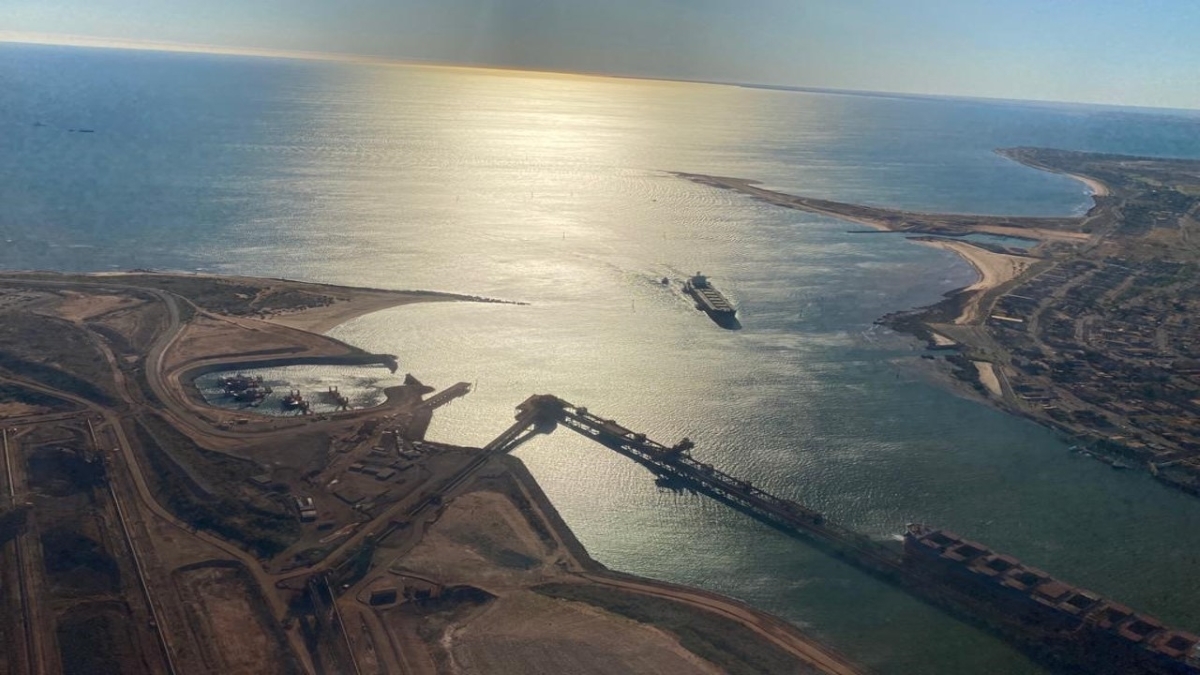 Loading a moist cargo could be catastrophic for all on board (source: BHP)
Loading a moist cargo could be catastrophic for all on board (source: BHP)
Riviera Maritime Media’sLiquefaction and dynamic separation: identifying and managing the signs webinar, led by industry experts, delved into the critical issue of liquefaction in maritime transport, emphasising its catastrophic potential and the urgent need for effective prevention and management strategies
The event saw contributions from Lloyd’s Register rule development team lead Elizabeth McCaig and BHP principal of maritime safety and technical Prashanth Athipar, shedding light on both the causes and the complex solutions required to address this maritime hazard.
Ms McCaig opened the discussion with a stark reminder of liquefaction’s devastating impact, stressing it can lead to a rapid loss of stability and even capsize within seconds, “Liquefaction is catastrophic.”
Drawing on historical examples such as the Black Rose and Alaska Diamond incidents, she highlighted the challenges of stabilising vessels once liquefaction occurs and underscored the importance of early detection and robust assessment protocols, cautioning that remedial actions may not always yield favourable outcomes.
Mr Athipar provided insights into the complexities of cargo classification and regulatory compliance, particularly in the context of bulk carriers and mineral concentrates.
He outlined the various risk factors associated with liquefaction, emphasising the loss of lives, property and reputational damage as significant concerns.
Mr Athipar elucidated BHP’s rigorous approach to managing these risks, which includes stringent compliance measures, regular testing and robust internal controls.
The webinar underscored the need for a multifaceted approach to liquefaction prevention and management, combining regulatory compliance, industry best practices and technological innovations.
Ms McCaig stressed that while transportable moisture limits (TML) serve as a crucial control measure, they alone may not suffice to ensure vessel safety and advocated for a holistic approach that considers other risk mitigation strategies and underscores the importance of regulatory enforcement to uphold safety standards across the industry.
In conclusion, the webinar participants stressed the imperative for greater industry collaboration and regulatory alignment to address the challenges posed by liquefaction effectively. Despite the inherent complexities, proactive measures and a shared commitment to safety can mitigate the risks associated with liquefaction, ensuring the protection of vessels, crew and cargo in maritime transport.
This webinar provided invaluable insights for industry stakeholders, reinforcing the critical importance of vigilance, adherence to regulations, and continuous improvement in liquefaction prevention and management strategies in maritime operations.
Webinar poll results
Does having access to a shore-based response service aid the Master in the event of liquefaction occurring?
No, the Master will not have enough time to do anything anyway: 10%
Yes but only if it is possible to monitor the cargo for early signs of liquefaction: 60%
Yes, it can’t hurt: 30%
Would you consider a redesign of a bulk carrier (ie fit longitudinal bulkheads) if it meant no longer having to worry about the TML?
Yes: 50%
No: 50%
Do you think the TMLs are set sufficiently low to account for the possibility of a rise in moisture content during the voyage?
Yes, the TMLs are at the right level: 20%
Yes, but I still worry about the moisture content increasing: 30%
No, the TMLs needs to be stricter: 50%
Source: Riviera Maritime Media






